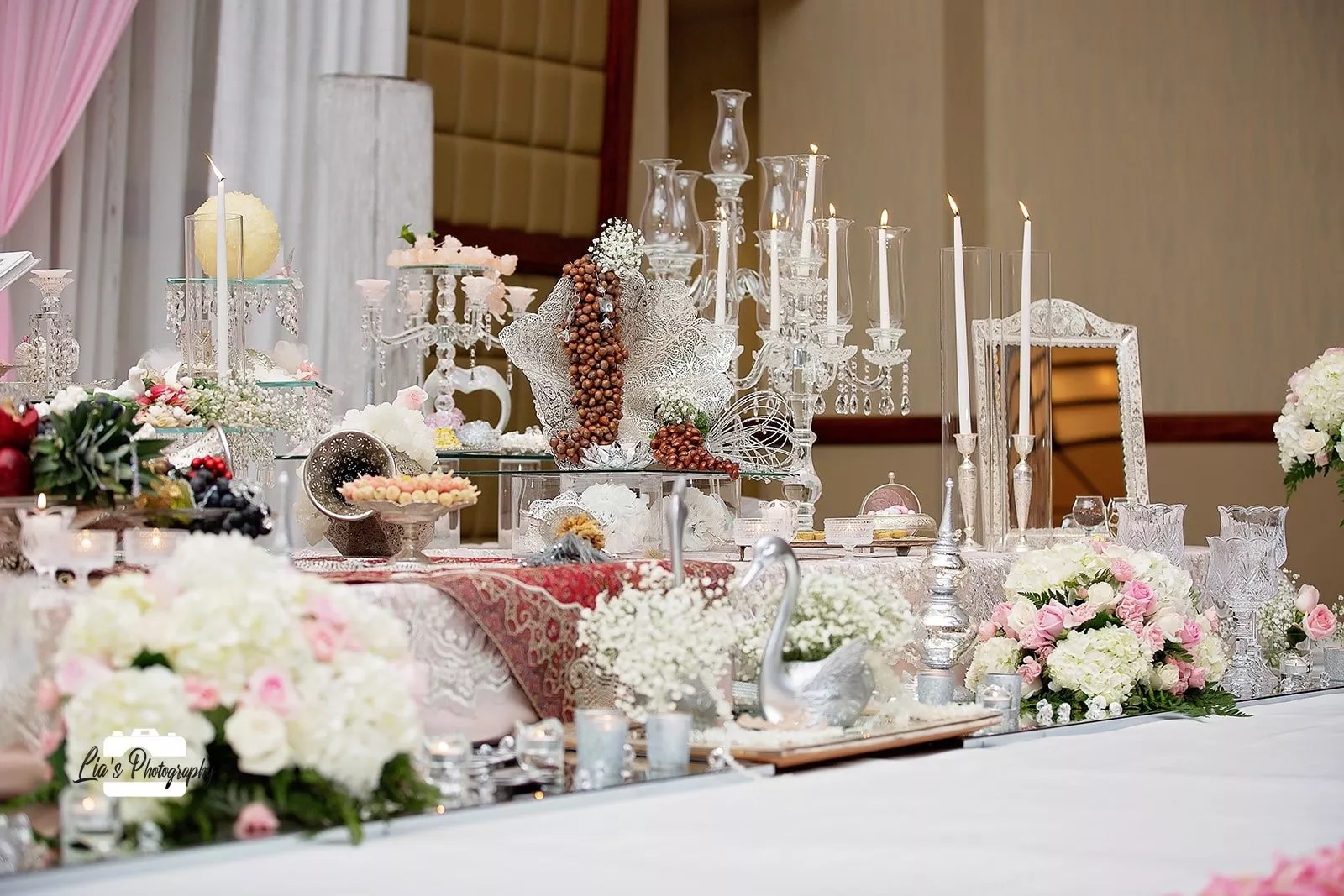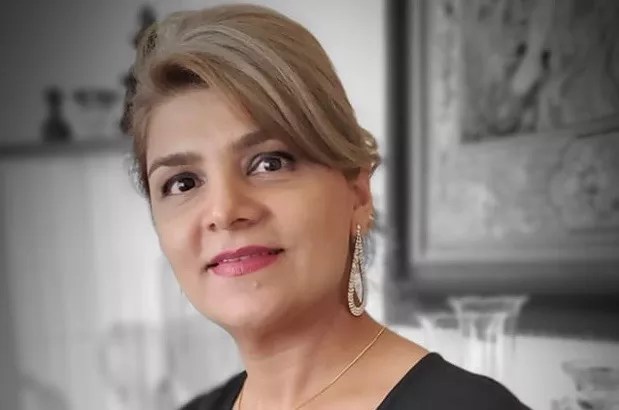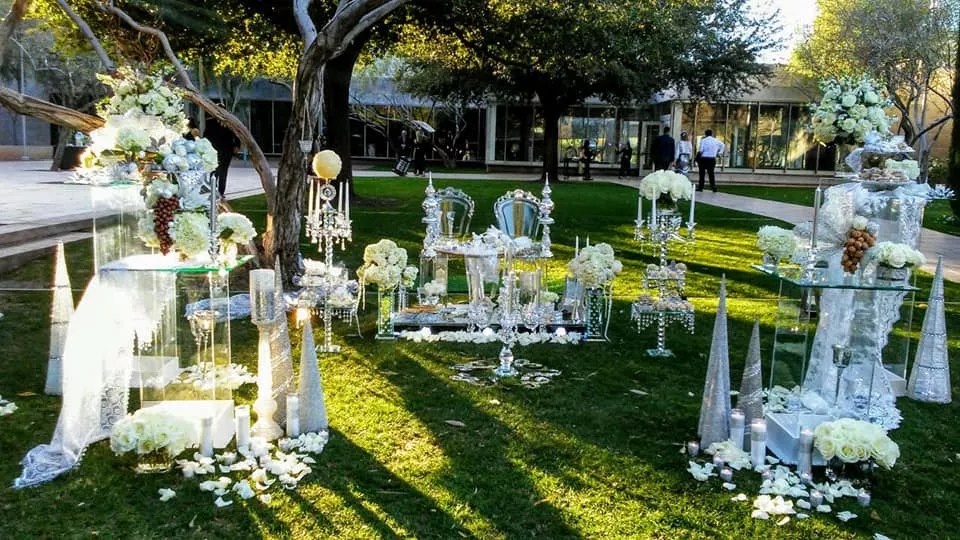
Lia’s Photography

Audio By Carbonatix
When Tania Rooholamini, a Chandler-based Iranian entrepreneur and owner of Pary’s Daughter Event Planning, takes on a client, she spends time with them to get an idea of their vision (and budget). Pary’s Daughter plans parties, funerals, weddings, and haft seen (a set-up for Persian New Year, or Nowruz). Along with all these events comes spreads of symbolic food.
This year, Rooholamini’s work is being showcased (again) at Scottsdale Quarter in recognition of Nowruz 2021 – which is this Saturday, March 20. But Rooholamini has come a long way (literally). Hers is a story of an inherited skill turned side-gig turned life’s work.
The business’s name is an homage to Rooholamini’s mother, Pary Shahsavar. She was a tailor in Iran who made custom wedding gowns and other dresses. Rooholamini was helping with the ironing and sewing details (like those delicate little pearls) by 15.
“This was no light task,” she says. “It was someone’s wedding dress. If I messed up, my mom would have to answer for it. But she trusted me to do it.”

Tania Rooholamini, owner of Pary’s Daughter.
Pary’s Daughter
She says mom encouraged balance. “Maman always supported us to learn new things. Art, craft, sports, anything really,” she says, using the Persian word for mom. The trust maman had inspired Rooholamini to take on more.
By 18, she offered to make her first engagement table. “I made a poofy table cloth that played on [the bride’s] dress, added bows, and made a decorative table for the sweets and fruits,” she says. The bride-to-be was so impressed she asked Rooholamini to do her wedding sofreh aghd, too.
Sofreh aghd is a spread of items symbolizing best wishes for the new couple. Mirror brings clarity, candelabras represent warmth and light, a copy of the Quran offers blessings. But most items are edible.
Bread symbolizes abundance. Herbs are for health. Honey sweetens the couple’s lives. Coins bring riches, eggs fertility, and hazelnuts, walnuts, and almonds bring longevity. Fruits bring blessings, flowers usher beauty, wild rue is for purification and to deter the evil eye. Khoncheh, or certain herbs and spices, break witchcraft and blind the evil eye. There’s also a bowl of crystalized sugar for more sweetness. Finally, two sugar cones would be rubbed together, showering sugar over fabric held over the bride and groom’s heads.
Back to Rooholamini’s first sofreh aghd.
“I was terrified,” she says. “I had never done anything of this magnitude before.” Maman reminded her of how successful the engagement table had been and promised to help. But, “I didn’t have money to buy materials. So I used my mom’s scrap materials to put something together. I used her leftover ribbons to decorate the eggs and when the day of the event came, despite the compliments, I gave the credit to my mom,” she says. “She was a designer after all. I didn’t feel like I had credibility.”
But that would change. Following that wedding, friends would buy the materials and ask Rooholamini to do their sofreh aghd. She started pro bono, then slowly began charging. Eventually, this became her side gig in addition to her day job as a finance manager at a tile company. Then she added a videographer and florist to her team. Pary’s Daughter was born.
When she immigrated to the U.S., specifically Phoenix’s east Valley, in 2007, she started showcasing her work by doing a haft seen exhibits at her house. They were also for sale, and each of the 12 haft seen setups sold.
Her next project was a presentation on the separation of Persian culture from Islam where she focused on Nowruz. Islam has a number of celebrations and eids (festivities), but that doesn’t include Nowruz. This was around 2011 at Scottsdale Community College. Some students were presenting on revolutions in different countries and the separation of Iran and Islam. She was able to collaborate with the students to showcase another haft seen.

A haft seen display at Phoenix Art Museum.
Pary’s Daughter
By now Rooholamini’s resume has expanded to include some big Arizona events. Think the Tucson Heart Ball, an elaborate haft seen setup for the Persian New Year Festival at the Scottsdale Waterfront, a number of Persian concerts, and the Persian Cultural Center Gala at the Arizona Biltmore Resort. And this is all in addition to her regular weddings, showers, and funerals.
For funerals, Rooholamini sticks with traditional foods – dates, rosewater, and nuts. She also uses halva, a paste made from wheat flour, oil, saffron, sugar, and rosewater.
And what’s the symbolism behind these foods?
“They have just lost someone and have been grieving,” Rooholamini says. “They may not have had proper food, so the food is small bites packed full of energy.” And typically, before people eat the food or sweets, they say a prayer for the lost loved one.
Drinks follow the same rule. Chaee tea (in Farsi, chaee is used to mean black tea in general) is standard at any Iranian gathering, but here rosewater and/or cardamom are added for flavor. In the summer they serve sharbat, which is made from particular syrups, like cherry, mixed with water and ice.
Overall, Rooholamini’s ultimate goal is to make her clients feel like guests at their own gatherings. She said this last part in Farsi.
“For the Iranians, I promise to bring you a feeling of home,” she says. “I’m here to take care of the details so that you can relax and make memories with your guests.”
For more information on pricing and availability, see the Pary’s Daughter website.